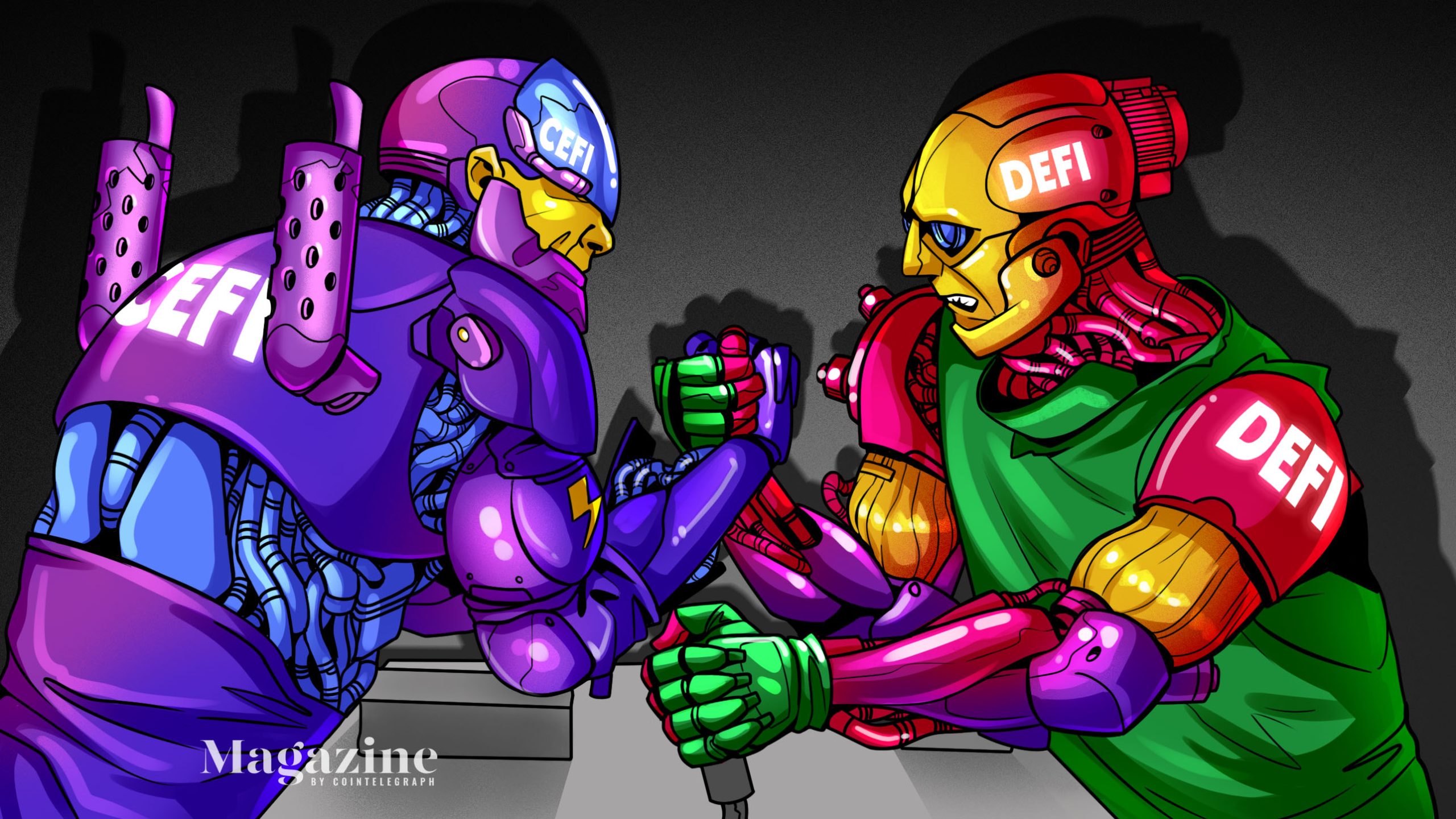“The collapse of crypto shadow banks like Celsius demonstrated just how problematic centralized, opaque finance can be,” says Sunny Aggarwal of Osmosi
“The collapse of crypto shadow banks like Celsius demonstrated just how problematic centralized, opaque finance can be,” says Sunny Aggarwal of Osmosis DEX.
Centralized finance platforms have taken a huge credibility hit due to poor risk controls, but decentralized finance protocols haven’t escaped unscathed either. So, is DeFi or CeFi likely to emerge stronger from this current period of turmoil, or is the future likely to see some sort of hybrid of the two?
In November 2021, Zhu Su, co-founder and chief investment officer of hedge fund Three Arrows Capital (3AC), was a big name within the CeFi industry. Having just closed a purchase of more than $400 million worth of Ether using the fund’s assets, together with his friend Kyle Davies, the two had become among the world’s largest crypto holders.
As a crypto bull market mesmerized the attention of return-hungry investors, funds poured into the Singaporean-based 3AC. After all, all investors had to do was to make a wire transfer, sit back, relax and enjoy the fat returns generated by the hands of “professionals,” right?
Fast forward just eight months later, both Su and Davies are in hiding after the collapse of the firm blew up the CeFi sector and wiped hundreds of billions off the overall market cap. A court in the British Virgin Islands ordered 3AC’s liquidation with an estimated $2.8-billion hole in the balance sheet.

It turned out that a series of highly leveraged directional bets made by 3AC went horribly wrong as the crypto bear market intensified in May, wiping out what’s likely to be all of its investors’ capital. 3AC had taken large loans from all the big CeFi lenders — Voyager, BlockFi and, to a lesser extent, Celsius, leaving them all exposed, too.
Crypto-brokerage Voyager Digital reportedly lent $665 million to 3AC for trading purposes. It issued a default notice to no avail, and the firm was forced to file for bankruptcy. Crypto broker Genesis recently announced it will cut a fifth of its staff and replace its CEO after lending $2.4 billion to Three Arrows Capital. BlockFi suffered huge losses after liquidating 3AC; Finblox closed withdrawals; Derebit filed a liquidation application; and Blockchain.com got stung for $270 million and laid off 25% of its staff.
Celsius Network wasn’t as affected directly by 3AC, as it only had $75 million in loans outstanding to the fund. However, falling crypto prices and a bank run following the collapse of Terra and ongoing contagion saw its net assets swing to negative $2.85 billion and was forced to halt withdrawals from more than 1.5 million customers indefinitely. It’s currently trying to trade its way out of bankruptcy.
This is literally the best advert for DeFi we could ever hope for. pic.twitter.com/BZQm6Ntzav
— drnick 🗳️² X 🏴 (@DrNickA) July 19, 2022
How did DeFi perform?
Decentralized finance, or DeFi, has performed a lot better at least in terms of contagion and by and large kept chugging along. Just before the crypto crash this year, never before seen developments, such as collateralized peer-to-peer lending, decentralized exchange swaps and liquid staking, led many crypto enthusiasts to believe that the world was on the brink of a new decentralized finance revolution.
Within a span of two years, the total value locked in DeFi projects had gone from nothing to over $300 billion. Heck, even traditional financial institutions (TradFi) skeptical of blockchain, such as the Bank of International Settlement, praised the technological innovations brought forth by DeFi.
However, investors’ confidence was harmed by the collapse of Terra and further shaken by ongoing hacks, which saw losses of $678 million during the second quarter of 2022 alone. Malicious actors, such as North Korea-backed Lazarus Group, have wreaked havoc in the sector by finding clever and intriguing new ways to break into critical smart contracts and draining them of users’ funds. Axie Infinity, a popular nonfungible tokens monster battle game, saw its Ronin cross-chain bridge lose $612 million in just one single Lazarus exploit earlier this year.
It’s no doubt that opacity regarding investors’ money along with poor risk management and a lack of accountability has severely damaged CeFi’s reputation. But many crypto investors’ who weren’t big fans of custodied funds in the first place did not expect DeFi to fall so hard so quickly as well.
The cryptocurrency bear market has led to the value of certain DeFi tokens falling more than 90% within months, while some have been completely wiped out. Even reputable “blue chip” projects, such as lending protocol Aave, decentralized exchange Uniswap and stablecoin liquidity platform Curve, could not shield their tokens from the bloodbath, falling 60%–70%.
Losing funds through bugs, poorly written code and security exploits have dealt severe blows to confidence in the…
cointelegraph.com
